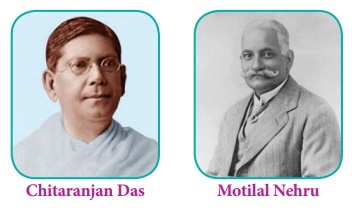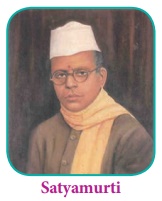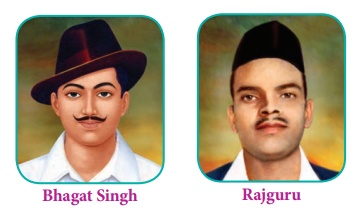Advent of Gandhi and Mass Mobilisation | History - Swarajist Party and its Activities | 12th History : Chapter 4 : Advent of Gandhi and Mass Mobilisation
Chapter: 12th History : Chapter 4 : Advent of Gandhi and Mass Mobilisation
Swarajist Party and its Activities
Swarajist Party and its Activities
Following
the suspension of Non-cooperation the question was what next? Chittaranjan Das
and Motilal Nehru proposed a new line of activity. They wanted to return to
active politics which included entry into electoral politics and demonstrate
that the nationalists were capable of obstructing the working of the reformed
legislature by capturing them and arousing nationalist spirit. This group came
to be called the ŌĆśSwarajists and pro-changersŌĆÖ. In Tamil Nadu, Satyamurti joined
this group.

There was
another group which opposed council entry and wanted to continue the Gandhian
line by mobilizing the masses. This team led by Rajagopalachari,Vallabhai Patel
and Rajendra Prasad was called ŌĆśNo changers.ŌĆÖ They argued that electoral
politics would divert the attention of nationalists and pull them away from the
work of mass mobilization and their issues. They favoured the continuation of
the Gandhian constructive programme of spinning, temperance, Hindu-Muslim
unity, removal of untouchability and mobilise rural masses and prepare them for
new mass movements. The pro -changers launched the Swarajya party as a part of
the Congress. A truce was soon worked out and both the groups would engage
themselves in the Congress programmes and their work should complement each
otherŌĆÖs activities under the leadership of Gandhi, though Gandhi personally
favoured constructive work.

The
Swarajya party did reasonably well in the elections to Central Assembly by
winning 42 of the 101 seats open for election. With the cooperation of other
members they were able to stall many anti-people legislations of the colonial
regime, and were successful in exposing the inadequacy of the Act of 1919. But
their efforts and enthusiasm petered out as time passed by and consciously or
unconsciously they came to be co-opted by the Government as members of several
committees constituted by it.
In the
absence of nationalist mass struggle, fissiparous tendencies started rising
their head. There were a series of communal riots with fundamentalist elements
occupying the space. Even the Swaraj party was affected by the sectarianism as
one group in the name of ŌĆśresponsivistsŌĆÖ started cooperating with the
government, claiming to safeguard ŌĆ£Hindu interestsŌĆØ. The Muslim fundamentalists
similarly seized the space created by the lull in national struggle and started
fanning communal feeling. Rise of Left Radicalism Gandhi was pained at the
developments. To contain the communal frenzy he went on a 21 day fast.
Left Movement
Meanwhile socialist ideas and its activists also had filled some space through their work among peasants and workers. The labour and peasant movements were organized by the ŌĆśleftistsŌĆÖ. Marxism as an ideology to criticise colonialism and capitalism had gained ground. It manifested itself in the organization of students and youth apart from trade unions. Jawaharlal Nehru and Subhas Chandra Bose contributed to the spread of leftist ideology. They argued that both colonial exploitation and the internal exploitation by the emerging capitalists should be fought. A group of youngsters with S A. Dange, M.N Roy, Muzaffar Ahmed along with elderly persons such as Singaravelu form Tamilnadu founded the peasants and workerŌĆÖs parties. The government came down heavily on the communist-socialists and the revolutionaries a series of ŌĆśconspiracy casesŌĆÖ such as Kanpur, Meerut, Kakori were booked.

It was at
this juncture Bhagat Singh, Chandrashekar Azad, Rajguru and Sukhdev emerged on
the scene. The Naujawan Bharat Sabha, Hindustan Republican Association were
started and thousands of youngmen and women became active anti-colonialists and
revolutionaries. Youth and student conferences were organized all over the
country. Meanwhile Ramprasad Bismil and Ashfaq-ullah were convicted to death
and 17 others were sentenced to long term imprisonment in the Kakori conspiracy
case. Bhagat Singh, Chandrashekar Azad and Rajguru, enraged at the police
brutality and death of Lajpat Rai, killed Saunders, the British police officer
who led the lathi charge at Lahore. Bhagat Singh and Batukeswar Dutt threw a
bomb into the central Assembly hall on 8 April 1929. In 1929 the Meerut
conspiracy case was filed and three dozen communist leaders were sentenced to
long spells of jail terms. All these developments and incidents are discussed
in detail in the next lesson.

Related Topics